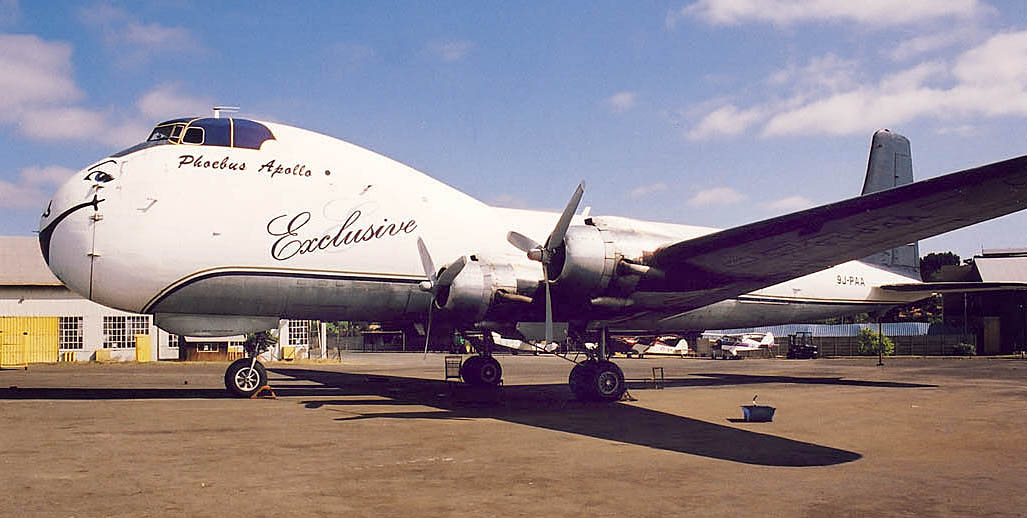
Aviation Traders Carvair
 |
| Carvair 9J-PAA remains in operation, with Phoebus Apollo in South Africa |
| The unique Aviation Traders Carvair design emerged in the 1950s when
Air Charter Ltd of Southend in the UK began to look for a replacement for its
aging Bristol Freighters to use on its cross-Channel car transportation
routes. It turned to its associate company, Aviation Traders (Engineering) Ltd at Southend, to develop a larger type to carry five cars plus their occupants. No existing design fitted the bill so ATL adapted the Douglas DC4 with a new nose to allow cars to be driven straight into the fuselage through a swing door. Douglas helped with the conversion, which also saw the type fitted with a taller, DC7-style tail. The aircraft was named Carvair - or car-via-air - and the first conversion flew for the first time on June 21, 1961. The type entered service with the Channel Air Bridge divison of Air Charter (by then incorprated in British United Air Ferries) on the vehicle routes in March 1962. The type featured a 68ft (20.73m) forward hold with enough space for four or five cars and a rear cabin of 12ft 2in (3.71m) with space for 23 passengers. BUAF operated ten Carvairs, while others were converted for Aer Lingus (3), Aviaco of Spain (3) and Compagnie Air Transport (2), the latter former Interocean Airways of Luxembourg machines with all-passenger layouts. Other early operators included Ansett, Air Cambodge and Dominicana. The type soldiered on with BUAF, later British Air Ferries, on freight flights into the 1980s with other significant operators including Falcon Cargo and Academy Airlines in the US. The type remains in service with Phoebus Apollo in South Africa, while there are two other potential fliers in the US. |
| Contents | Photos and census | Update |